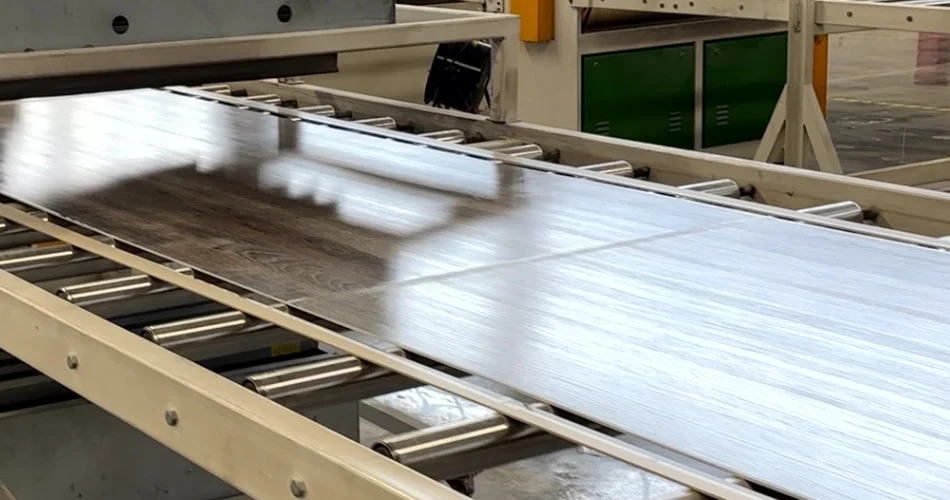Prototype making of Rigid Core SPC Flooring samples for client to inspect and review is an important process for flooring importers. As different client has different preference over the color design, customized colors need to be approved by client to ensure our mass production of SPC flooring fully meet the expectation from our clients.
Today at our manufacturing site, we have received the adjusted color deco films and are in the process of laminating the deco films into the SPC planks.

Required Specification for Rigid Core SPC Flooring Prototype
- Total Thickness: 6.5mm
- Core Layer Thickness: 4.7mm
- Wear Layer Thickness: 0.3mm
- Underlayer Thickness: 1.5mm
- Installation: Click n Lock
- Edge Design: Square Edge
- Surface Embossing: Deep Emboss
Click SPC 5.0mm/0.3mm + 1.5mm EVA + Unilin Click + Square Edge + Deep Embossed
Prototype Making Production Process
When it comes to prototype making for SPC planks, there are a few different steps and milestones involved in the process.
- Select Design patterns from Swatch Book by Client
- Receive ideal color samples for color adjustment
- Receive color adjusted color print deco films
- Proceed with Prototype SPC plank extrusion
- UV curling
- Color Matching Observation
- Cut Planks and Send Prototype samples for approval
The first step is to get a design pattern and colors that match clients’ preferences. Somethings after a design is selected, it might take a few times for the printing film supplier to get the right or ideal color for the client. The printing film supplier will provide small quantities of deco films (generally 8-10 meters works best, but often manufacturers receives less) so manufacturers can laminate the film into the flooring product.
Once the manufacturer receives the film, the production line will operate to laminate wear layer, the print deco film, extruded base layer altogether. While at this stage, we can already see the full frame of the design, but it still need to go through the UV curling process where a PU coating or other type of coatings are applied onto the surface. The coating will have a slight color variation as different formulation can effect the transparency rate as well as minor color influence from its formula.
